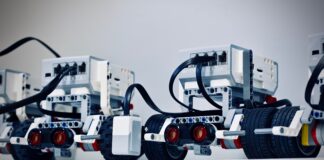In recent years, artificial intelligence (AI) has emerged as a transformative tool across various sectors, and public health surveillance is no exception. AI’s ability to analyze vast amounts of data in real-time, predict trends, and provide actionable insights has revolutionized how health organizations monitor, predict, and manage public health challenges. AI in public health surveillance is rapidly becoming a cornerstone of modern healthcare systems, offering unprecedented advantages in disease detection, resource allocation, and epidemic prevention. In this article, we will explore 10 things you’ll wish you knew about AI in public health surveillance. Understanding these insights will help policymakers, healthcare providers, and public health professionals navigate the evolving role of AI in safeguarding the health of populations.
1. AI Enhances Disease Detection and Early Warning Systems
One of the most significant impacts AI has had in public health surveillance is enhancing disease detection and improving early warning systems. Traditional methods of disease detection rely heavily on clinical data, reporting systems, and manual analysis, which can be slow and prone to error. AI, however, can analyze vast datasets from diverse sources such as hospitals, laboratories, social media, and even wearable devices in real time to identify potential outbreaks or emerging health threats.
AI-powered surveillance systems can detect patterns in the data, such as unusual spikes in symptoms or increased mentions of certain diseases on social media, which could indicate the onset of an outbreak. Machine learning algorithms trained on historical disease data can also predict the spread of diseases, allowing public health officials to respond more effectively and implement timely interventions before the situation escalates.
2. AI Predicts and Models Disease Spread
Another remarkable application of AI in public health surveillance is its ability to predict and model the spread of diseases. AI and machine learning algorithms can simulate disease transmission based on multiple factors, including population density, mobility patterns, and environmental conditions. By analyzing vast amounts of historical and real-time data, AI models can provide accurate predictions of how a disease will spread across geographic regions and populations.
This predictive capability is invaluable for public health authorities in planning and preparing for potential outbreaks. For example, during the COVID-19 pandemic, AI-driven models helped forecast the spread of the virus, guiding decisions on social distancing measures, travel restrictions, and vaccine distribution. By using AI to model disease dynamics, public health agencies can take proactive measures to contain the spread and reduce the impact on communities.
3. AI Improves Surveillance Efficiency
Public health surveillance requires the continuous collection, monitoring, and analysis of health data, which can be time-consuming and resource-intensive. AI significantly enhances the efficiency of this process by automating many of the tasks involved. For example, AI systems can analyze electronic health records (EHRs) or public health reports much faster than humans can, identifying potential health threats or disease outbreaks within seconds.
AI can also process unstructured data, such as medical images, audio, and social media posts, which traditional surveillance systems might miss. By incorporating AI into public health surveillance, organizations can streamline data collection, reduce the time spent on manual analysis, and allow health professionals to focus on critical decision-making.
4. AI Supports Resource Allocation and Optimization
One of the key challenges in public health is ensuring that resources are allocated effectively, particularly during disease outbreaks or health crises. AI can assist in optimizing resource allocation by analyzing health data, population needs, and geographic trends to determine where interventions are most needed.
For example, AI can help public health authorities predict the number of hospital beds, ventilators, or medical personnel needed in specific regions based on real-time data. This enables more efficient and targeted distribution of resources, reducing waste and ensuring that the right resources are available in the right places at the right time. By leveraging AI for resource optimization, public health organizations can maximize their impact and ensure that their response efforts are as effective as possible.
5. AI Detects Health Inequities and Disparities
AI in public health surveillance has the potential to reveal health inequities and disparities that may have previously been overlooked. By analyzing health data across different demographic groups, AI can identify populations that are at higher risk for certain diseases or health conditions. These insights can help public health agencies target interventions more effectively and ensure that underserved or vulnerable populations receive the care and attention they need.
For example, AI can detect patterns in disease prevalence related to socioeconomic status, ethnicity, gender, or geographic location. These insights allow public health organizations to address disparities by allocating resources, designing tailored interventions, and improving access to healthcare for disadvantaged communities.
6. AI Improves Outbreak Management and Response
AI’s ability to analyze data in real time and provide actionable insights has made it an indispensable tool in outbreak management and response. During an outbreak, time is of the essence, and AI helps to speed up decision-making by providing accurate predictions and real-time analytics. AI models can track the progression of an outbreak, identify high-risk areas, and suggest the most effective response strategies based on data-driven insights.
AI can also play a key role in coordinating resources during an outbreak, ensuring that medical supplies, vaccines, and personnel are deployed where they are needed most. Furthermore, AI can help streamline communication between public health officials, healthcare providers, and the public, ensuring that accurate information is shared and interventions are implemented quickly.
7. AI Enhances Epidemiological Surveillance Systems
Epidemiological surveillance is crucial for understanding the dynamics of infectious diseases and tracking their spread. AI has transformed epidemiological surveillance by enabling real-time data collection, analysis, and modeling. AI algorithms can monitor large datasets, including environmental data, demographic information, and health indicators, to identify potential public health risks before they escalate.
For example, AI can track climate change patterns to predict the emergence of diseases linked to specific environmental conditions, such as vector-borne diseases like malaria or dengue fever. AI can also integrate data from multiple sources, such as international travel patterns, to predict the global spread of diseases and guide public health responses.
8. AI Improves Data Privacy and Security in Surveillance Systems
As public health surveillance systems collect vast amounts of sensitive data, including personal health information, ensuring data privacy and security is paramount. AI can enhance data security by detecting potential breaches, securing sensitive data, and ensuring that data is only accessed by authorized individuals.
AI can also improve privacy protection by using techniques such as data anonymization and encryption. By leveraging AI, public health organizations can protect individuals’ privacy while still benefiting from the insights generated through data analysis. Ensuring data privacy and security is essential for maintaining public trust in health surveillance systems.
9. AI Enables Real-Time Health Monitoring and Surveillance
AI is also enhancing public health surveillance by enabling real-time health monitoring through wearable devices and mobile health apps. These technologies allow individuals to track their health metrics, such as heart rate, blood pressure, or physical activity, and provide valuable data that can be used for public health surveillance.
By integrating this real-time data into broader public health surveillance systems, AI can help detect early signs of disease outbreaks, identify patterns in population health, and provide insights into the effectiveness of health interventions. These tools also empower individuals to take control of their health, contributing to better overall public health outcomes.
10. AI Drives Innovation in Health Policy and Decision-Making
Finally, AI plays a crucial role in informing health policy and decision-making by providing evidence-based insights that guide public health strategies. AI models can analyze large datasets from diverse sources to identify trends, assess risks, and evaluate the effectiveness of different health policies.
For example, AI can predict the potential impact of policy changes, such as lockdown measures or vaccination campaigns, on disease transmission and public health outcomes. This data-driven approach allows policymakers to make more informed decisions that are tailored to the specific needs of their populations. As AI continues to evolve, its role in shaping public health policy will become increasingly important.
Conclusion
AI has the potential to revolutionize public health surveillance by enhancing disease detection, improving resource allocation, and providing real-time insights into population health. The integration of AI into public health systems offers numerous advantages, from predicting disease spread to addressing health inequities and enhancing response efforts during outbreaks. As AI continues to evolve, its role in shaping the future of public health surveillance will only grow more significant. By understanding these 10 critical aspects of AI in public health surveillance, stakeholders can better prepare for the challenges ahead and harness AI’s full potential to safeguard the health of populations worldwide.














